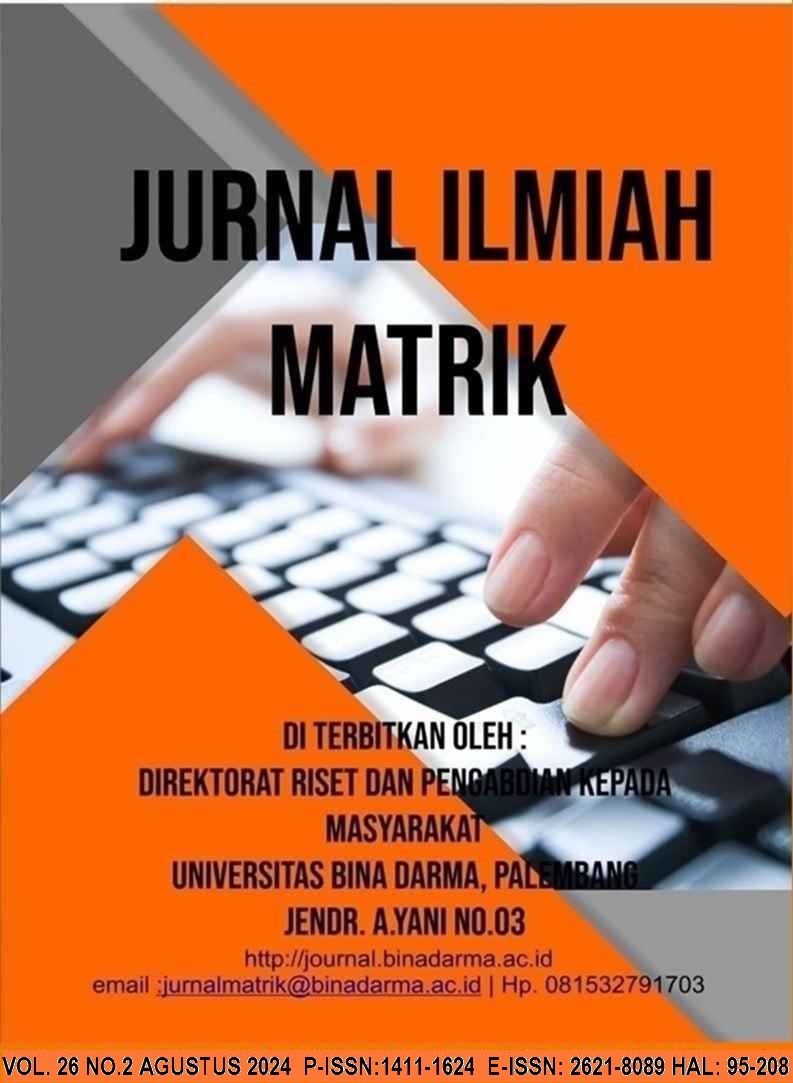Analisis Kepuasan Penggunaan Vendor Management System iVendor PT. Pertamina (Persero) Menggunakan Metode TAM dan EUCS
DOI:
https://doi.org/10.33557/jurnalmatrik.v26i2.3184Keywords:
Vendor Management System, Technology Acceptance Model, End-User Computing Satisfaction, Pertamina, procurement, VMSAbstract
Information technology has significantly changed a variety of life, including corporate buying. The iVendor Pertamina vendor management system is a technological innovation that was created to manage procurement effectively. There are still problems influencing customer satisfaction even with its enhanced functionality and usability. The purpose of this study is to determine the variables that affect users' satisfaction with the iVendor system and to offer suggestions for enhancements. The End-User Computing Satisfaction (EUCS) and Technology Acceptance Model (TAM) research models are employed. 95 PT Pertamina (Persero) active iVendor users received questionnaires as part of the quantitative study approach. Results show that perceived usefulness, accuracy, and attitude toward use have a significant impact on user satisfaction. Perceived ease of use, content, format, timeliness, and ease of use do not significantly affect the attitude toward using. The conclusion is that factors such as perceived usefulness and information accuracy have a significant impact on user satisfaction with the iVendor system. To enhance user satisfaction, the study recommends improving the information quality and usability of the iVendor system.
Downloads
References
I. K. H. S. Dana and N. Kostini, “Optimalisasi VMS pada Pengadaan Kendaraan Khusus di PT Pindad Optimization of VMS on Special Vehicle Procurement in PT Pindad,” J. Organ. Manag. Bus. Logist., vol. 01, no. 02, pp. 219–227, 2023.
Vendor Managemet Pertamina, “Vendor Management System,” vol. 1, no. 19, p. 15, 2021.
F. D. Davis, “Perceived usefulness, perceived ease of use, and user acceptance of information technology,” MIS Q. Manag. Inf. Syst., vol. 13, no. 3, 1989, doi: 10.2307/249008.
W. J. Doll and G. Torkzadeh, “The measurement of end-user computing satisfaction,” MIS Q. Manag. Inf. Syst., vol. 12, no. 2, 1988, doi: 10.2307/248851.
R. Sholihah and A. D. Indriyanti, “Analisis Kepuasan Pengguna Aplikasi Camscanner Menggunakan Metode Technology Acceptance Model (TAM) dan End-User Computing Satisfaction (EUCS),” J. Emerg. Inf. Syst. Bus. Intell., vol. 3, no. 3, 2022.
S. Arikunto, Arikunto, S. (2010). Metode peneltian. Jakarta: Rineka Cipta, 173., vol. 2, no. 1. 2010.
H. Ghozali, I., & Latan, “Partial Least Square (PLS) Konsep, Teknik dan Aplikasi menggunakan program SmartPLS 3.0. Semarang : Badan Penerbit UNDIP.,” Partial Least Squares Konsep, Tek. dan Apl. Menggunakan Progr. SmartPLS 3.0 Ed. 2 (2nd ed.). Univ. Diponegoro Semarang, vol. 4, no. 10, 2016.
Umar Husein, “Metode Penelitian untuk Skripsi dan Tesis Bisnis Edisi Kedua,” Jakarta PT RajaGrafindo Persada, 2013.
H. Umar, Metode Penelitian Untuk Skripsi dan Tesis Bisnis. 2011.
J. Hair, C. L. Hollingsworth, A. B. Randolph, and A. Y. L. Chong, “An updated and expanded assessment of PLS-SEM in information systems research,” Ind. Manag. Data Syst., vol. 117, no. 3, 2017, doi: 10.1108/IMDS-04-2016-0130.
I. Ghozali and H. Latan, Partial Least Squares Konsep, Teknik dan Aplikasi Program SmartPLS 3.0. 2020.
Meha, “Analisis Kepuasan Pengguna Sistem Informasi Akademik Di Uin Syarif Hidayatullah Jakarta,” Bachelor’s thesis, Fak. Sains dan Teknol. UIN Syarif Hidayatullah Jakarta, vol. 8, no. 5, p. 55, 2019.
Sugiyono, Statistika untuk Penelitian. Bandung: Penerbit Alfabeta. 2017.
I. Ghozali, “Aplikasi Analisis Multivariate Program IMB SPSS19.,” Universitas Diponegoro, 2011.
E. P. Kusumah, “Technology Acceptance Model (TAM) of Statistical Package for the Social Sciences (SPSS) Applications,” Integr. J. Bus. Econ., vol. 2, no. 1, 2018, doi: 10.33019/ijbe.v2i1.47
Downloads
Published
Issue
Section
License
Jurnal Ilmiah Matrik byhttps://journal.binadarma.ac.id/index.php/jurnalmatrik is licensed under a Creative Commons Attribution-ShareAlike 4.0 International License.












